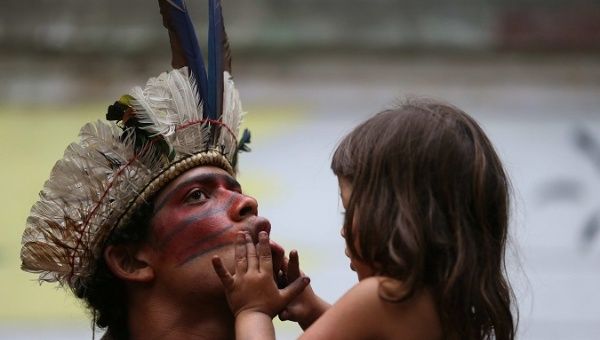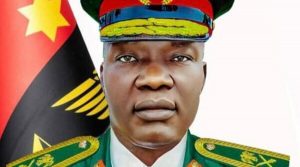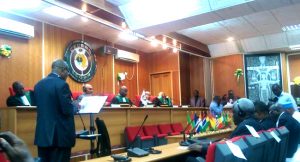Brazil’s indigenous guardians of the Amazon

For decades, the Waiapi have lived in the Brazilian state of Amapa in near-isolation from the non-indigenous world and in harmony with the rainforest. The river and trees that support their way of life are often described as the lungs of the world.Now, Brazilian President Jair Bolsonaro wants to change that, with proposals that include moving the tribe out of their legally demarcated territory and opening the land to miners to exploit dormant deposits of copper, iron and gold near their homes. His pro-business policies in the Amazon have recently come under attack for encouraging deforestation, as massive wildfires now rip through large swaths of the rainforest.The Waiapi believe they are the guardians of the Amazon and are wiling to do whatever it takes to protect it. CNN gained rare access to a Waiapi village and spoke to tribal leaders about what could happen if the government expropriates their land. A mysterious death on indigenous landThe Waiapi believe they owe their existence to a melody played by divine creator Jane Jara. According to legend, Jane Jara began playing a song on a long flute made from the trunk of an embauba tree. As he sang and played, the Waiapi were born. The Waiapi made contact with non-indigenous people in 1973, when the Brazilian government started to build a new highway, known as the BR-210 North Perimeter. The project was abandoned three years later, but enough was built to allow pelt hunters and miners to reach the Waiapi, bringing diseases like measles and disrupting their way of life. The tribe drove away what they call the “invaders” in the 1980s and took control of the area, according to a study published by the Socio-Environmental Institute (ISA), a Brazilian non-profit environmental advocacy group.”Some time ago, we lived well; we did not worry about land,” says the 59-year-old Ajareaty, one of the Waiapi’s few female chiefs. “We did not know we would have many invaders, loggers and prospectors in the future. Many talk about our land today, they say that they want to take our land.” Her village, Kwapo’ywyry, is one of 92 different Waiapi villages that dot the roughly 1.5 million acres in northern Brazil that was officially declared an indigenous reserve in 1996. The area was categorized by Brazil’s National Indigenous Affairs agency (FUNAI) as a “traditionally occupied indigenous reservation.” “Our leaders struggled a lot to demarcate the indigenous land because we heard that it if we did not do it, non-indigenous leaders would enter and finish our land in the future,” Chief Ajareaty says. “That’s why we made the demarcation.”But legal recognition has not entirely protected their land from intrusion, they say. In July, tribe members said that a group of miners illegally invaded the nearby village of Mariri and killed 68-year-old chief Emyra Waiapi.Viseni Waiapi, who lives in Ajareaty’s village, was one of the people who found Emyra’s lifeless body covered with wounds in a local river, he says. A few days later, on July 27, he sent a nearly five-minute audio message to Brazilian and international media, alleging that a group of heavily armed wildcat miners and non-indigenous people had violently stabbed Emyra all over his body, including his genitals. “We are asking for help,” Viseni said in Portuguese during the message. “We are in great danger.”Shortly after the news of Emyra’s death, United Nations High Commissioner for Human Rights Michelle Bachelet issued a statement calling on Brazil’s government to “reconsider its policies towards indigenous peoples and their lands, so that Emyra Waiapi’s murder does not herald a new wave of violence.”Bolsonaro reacted to the claims, telling reporters in Brasilia that Federal Police were investigating the death and that he was not convinced Emyra had been murdered. “Up to now, there is no strong evidence that this indigenous (chief) was murdered. There are several possibilities,” he said. “The Federal Police are there, are being sent there to get to the bottom of the case and find out the truth about this.”On August 16, Brazil’s Federal Police finally issued a preliminary report, concluding that Emyra had suffered a head injury and that the cause of death had been drowning. It said there were no signs of non-indigenous people trespassing on the reserve or of a potential confrontation during the initial investigation, and that police were still awaiting a toxicology report within the next thirty days.Four days later, the Association of Waiapi Villages issued a statement disputing the police report and claiming to have pictures showing that Emyra had been stabbed. The Association said the photos had been given to Federal Police, FUNAI and the Human Rights Commission of the lower house of Brazil’s Congress. It also said the river where Emyra was found was too shallow and that it would be very difficult for an adult person to drown in by accident.Brazil’s Environmental Minister Ricardo Salles claimed during an event in Sao Paulo on August 20, that Emyra had drowned after drinking too much.”It seems like the sad death of an indigenous leader, which some media outlets have pinned on wildcat miners who they say invaded the land and killed him, was caused by him drinking too much cachaçinha (Brazilian spirit), falling in the river and drowning,” he said, without offering any evidence to substantiate the alleged drinking. CNN reached out to the Ministry of Environment to request evidence supporting the minister’s claim, but did not get a response.Opening up indigenous landBolsonaro has said he believes too much land has been given to indigenous communities and that they stand in the way of Brazil’s development and financial growth. He has also said that he wants to move the tribes out of demarcated areas and “integrate the indigenous into society.””There are places where we could be producing things and we can’t because you can’t draw a straight line without stumbling upon indigenous land or an environmentally protected area,” Bolsonaro said on August 16 in Brasilia. “As long as I am president, there will not be any new land demarcated as indigenous territory.”About 13% of Brazil is legally considered indigenous land, mostly in the Amazon. That land is reserved for the country’s 900,000 indigenous people, which represents less than 0.5% of the country’s population. The role of certifying indigenous lands has long fallen under FUNAI, a task that Bolsonaro tried to move to the Ministry of Agriculture — which is heavily influenced by the interests of Brazil’s beef and soy industry — but was later reversed by both Congress and the Supreme Court. Part of the Waiapi’s reservation lies on the National Reserve of Copper and Associates (RENCA) — a protected area slightly larger than Denmark, which occupies roughly 17,800 square miles of land in the states of Amapá and Pará. It is thought to be rich in gold, copper and other minerals and has been protected by presidential decree against commercial mining since 1984. During a presidential visit last April to Macapá, the capital of Amapá state, Bolsonaro said he wanted to open up the reserve to commercial mining. “Let’s use the riches that God gave us for the wellbeing of our population,” he said. “RENCA is ours.”Bolsonaro’s predecessor, Michel Temer, previously tried to abolish Renca’s protected status and open it up for development, only to reverse the move within a month following backlash from Brazilian and international environmental groups. Where would tribes like the Waiapi go, if their lands became industrial mining or ranching zones? Bolsonaro would like to see them abandon the indigenous life, he has previously said. “We practically only see indigenous reservations in rich areas. We want to integrate the indigenous into our society. The indigenous are human beings like you and I,” Bolsonaro said during an event in Sao Paulo last June. “They want television, they want internet, they want soccer, they want to go to the movies. They want to do what we do. They want to go to doctor, to a dentist. That’s what we want for the indigenous people, to integrate them into the society — as human beings, just like us” At the same event, he blamed “NGOs outside of Brazil” for creating an “external pressure” to cordon off indigenous areas. Christian Poirier, a program director of the US based non-profit advocacy group Amazon Watch, tells CNN Bolsonaro’s narrative is only empowering agricultural companies and local cattle ranchers in the area and encouraging them to take control of the land at any cost. “When Bolsonaro says indigenous people have too much land, what he’s really saying is militias (of local cattle farmers) can act with impunity,” Poirier told CNN during a telephone interview. “What we are witnessing is unprecedented, we haven’t seen such an invasion of demarcated land in decades.” In their latest report on Brazil, Amazon Watch warned of the dangers of deforestation, environmental crimes and human rights violations and argued that indigenous land rights are “intrinsically linked” to preserving the biome. “These territories are the last buffer of protection against potential climate chaos on the planet,” Poirier said. “Indigenous people are on the front line and at the forefront of resistance.”There will be “great fires”Ororiwa Waiapi, 98, the Chief of the Mogywyry and Pyrankenopa villages, is one of the oldest people in the tribe. He says he has no interest in leaving the forest and fears what may come if he doesn’t keep fighting to protect it. “I’ve always been here, and I won’t leave,” Ororiwa says. “If we humans misuse this planet, our creator will make a great flood that will melt the planet. There will be great fires, fires that will destroy the planet.”In recent weeks, the world has seen dramatic broadcast and social media images of the Amazon on fire. Since the beginning of 2019, Brazil’s National Institute for Space Research (known as “INPE”) has reported up to 80,626 fires in the country as of Sunday night, with more than half of these in the Amazon region. An 85% increase in deforestation has occurred so far this year compared to last year, according to the institute. Many of the fires are believed to have been started by cattle ranchers and farmers using fire to clear land.World leaders, including French President Emmanuel Macron, have called the fires an “international crisis” and made it a topic of discussion during the G7 meetings.This comes within days of Norway and Germany suspending million-dollar donations to the Amazon Fund, which was created more than ten years ago as a global effort to help Brazil fight deforestation and expand research into biodiversity in the forest. Norway has also accused Bolsonaro’s government of violating key elements of the agreement. Learning the ways of the non-indigenousChief Ajareaty has been studying non-indigenous culture for years. She has traveled within Brazil and abroad, where she’s participated in forums and represented her tribe in countries like Germany and Colombia.”I said to myself, I want to learn what non-indigenous life is like. What their life is like,” says Ajareaty, who takes Portuguese language classes at a nearby school. “I want to know how to speak their language. I want to learn, so I can speak to the white people out there.” Protecting Waiapi land goes beyond the livelihood of her tribe, her daughter and granddaughter, she says. It is about protecting the planet and all living things. “We do not think about today, we think about the future. In the future our children and grandchildren will not be able to live well if we do not demarcate the land,” she says. “In the forest there are many things, fruits, fish, animals and also our medicine. Our concern is that if the forest is gone, people will also end.”She says she’s been training her daughter, Karota, 20, and hopes she will follow in her footsteps one day. “She always talks about the fight for the land, for our land and to fights for our rights,” Karota says, as she held her infant child. “This is very important for me, to keep fighting for the future generations.”







